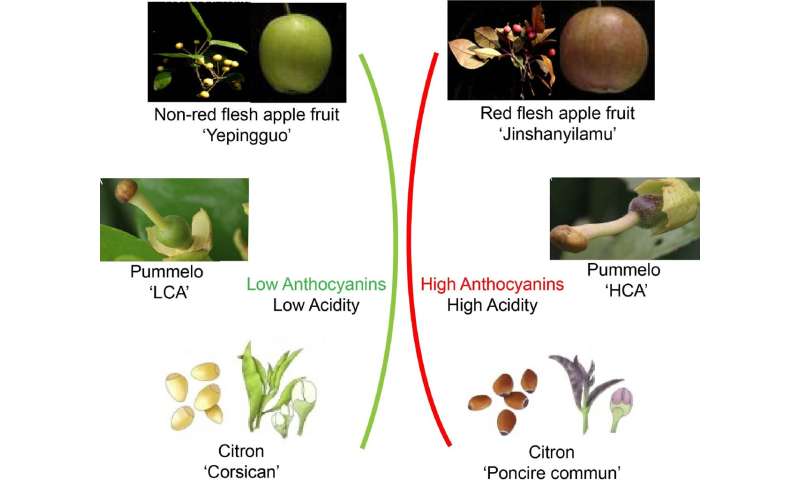Fruit quality: How anthocyanins and acidity shape consumer preferences and market value

A research team reviews the critical relationship between the accumulation of anthocyanins and organic acids in fruits, highlighting how these factors influence fruit color and consumer appeal through changes in vacuolar pH. The analysis focused on the transcription factors (TFs) responsible for the co-regulation of genes affecting these quality traits, aiming to enhance fruit marketability.
By establishing a genetic link and identifying the regulatory mechanisms involved, the team provides a roadmap for breeders to target specific traits for modification. Although progress has been made, the review underlines the necessity for further investigation to pinpoint key TFs and understand the impact of post-translational modifications and non-coding RNAs.
This research could open new avenues for in-depth genetic and functional studies to refine fruit quality at the molecular level, promising significant strides in agricultural biotechnology.
Decades of research have focused on fruit quality traits like color and acidity, which are crucial for consumer acceptance and market competitiveness. Color, influenced by anthocyanins, and acidity, determined by organic acids, are pivotal for appeal and taste.
Recent studies suggest a link between anthocyanin accumulation and acidity, indicating that these traits may be co-regulated by shared genetic pathways and transcription factors (TFs). However, there's a lack of in-depth research on the specific functions of individual TFs in managing both traits simultaneously.
The study published in Fruit Research aims to shed light on TFs as potential co-regulators of anthocyanin and acidity in fruits, addressing a significant gap in understanding the intricate regulatory networks that influence these essential quality traits.
The intricate relationship between anthocyanin accumulation and acidity in fruits has garnered attention due to their derivation from distinct metabolic pathways, yet observed co-occurrence in vacuoles, impacting color and taste. Studies have highlighted the pH-dependent color variation of anthocyanins and demonstrated a genetic linkage between anthocyanin and organic acid accumulation, supported by evidence from various fruits and genetic manipulations.
Notably, environmental factors and management practices, such as nitrate levels and temperature, play significant roles in modulating these traits through complex regulatory networks involving transcription factors (TFs). Among them, MYB, bHLH, and WDR TFs form a conserved MYB-bHLH-WDR complex, central to the co-regulation of anthocyanin and acidity by activating the expression of related genes.
Furthermore, the review highlights post-translational modifications of TFs and the involvement of non-coding RNAs as emerging areas of study, indicating a more complex regulation mechanism than previously understood.
Despite advances, the specific roles of many TFs and the impact of post-translational modifications remain partially explored, presenting opportunities for future research to elucidate the comprehensive regulatory mechanisms behind the co-regulation of anthocyanin accumulation and acidity.
According to the study's senior researcher, Prof. Yuanwen Teng, "Here, we review current knowledge on the relationship between anthocyanin accumulation and acidity, and highlight recent advances in the roles of TFs in regulating these quality traits via transcriptional co-regulation of different genes associated with anthocyanin accumulation and acidity for fruit quality improvement."
This understanding could significantly enhance breeding programs aimed at improving fruit quality by selecting for traits that influence both color and taste.
More information:
Ahmed Alabd et al, Transcriptional co-regulation of anthocyanin accumulation and acidity in fruits, Fruit Research (2023). DOI: 10.48130/frures-0023-0041
Provided by Maximum Academic Press